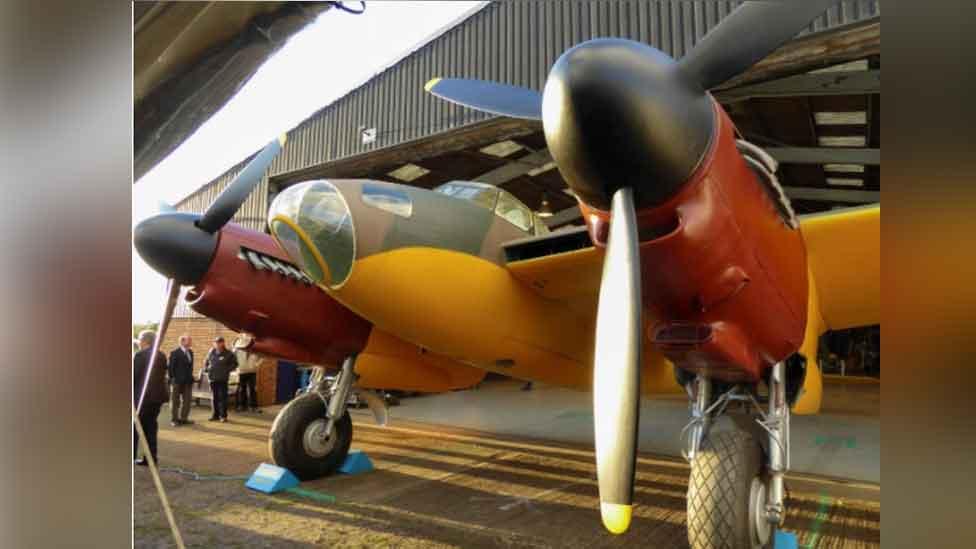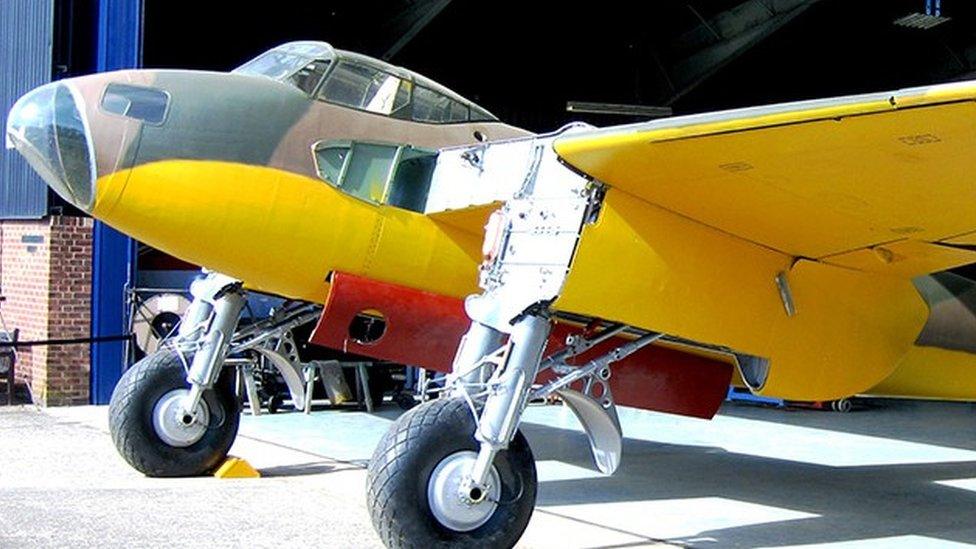De Havilland Museum postpones Mosquito's 80th anniversary plans
- Published

The restored W4050 was wheeled out on 25 November 2015 at 14:45 GMT, the exact time that Geoffrey de Havilland Jnr, first flew the plane from de Havilland's Hatfield factory hangar
The museum born from the development of the Mosquito aircraft has postponed plans for the plane's 80th anniversary due to the lockdown.
The DH98 prototype, which first flew on 25 November 1940, was the first exhibit at de Havilland Aircraft Museum, external in Hertfordshire when it opened in 1959.
A webinar with veterans and other activities have been cancelled due to the latest Covid-19 restrictions, external,
The museum said the day would be marked online and on social media instead.
The DH98 de Havilland Mosquito was regarded as the most versatile war plane and was used for fighting, bombing, reconnaissance and pathfinder missions.

The wooden test aircraft, number W4050, which is no longer airworthy, has been on display since May 1959
The wooden test aircraft, number W4050, which is no longer airworthy, has been on display since May 1959 when former Royal Marine Major Walter Goldsmith bought Salisbury Hall, near London Colney - where the de Havilland Aircraft Company was based until 1947 - and it became the first aviation museum in Britain.
The museum says it is the world's only surviving prototype from World War Two to be preserved and on display on the site where it was designed and built.
Alistair Hodgson from the museum said it was important to mark the anniversary because "the museum originated from the first prototype and it was also very important to World War Two".
"It was the first true multi-role airplane - these days most military planes are like that but during the war it was very rare," he said.
"It could fly very high, very low and had amazing turn of speed, it transformed the thinking of what you could do with a military aircraft."
The museum said it hoped to celebrate the anniversary in December if it was able to reopen.


The Mosquito prototype, pictured before its restoration was completed, is largely made from plywood and balsa
The DH98 Mosquito prototype W4050
Designed as a two-seat unarmed bomber, the W4050 prototype is said to have been the fastest of all the nearly 8,000 Mosquitoes produced
It was used for three years as a flying test bed for different versions of the Rolls-Royce Merlin engine which powered thousands of the Royal Air Force fighters and bombers
Used to test engines and not laden with the armoured plates of battle planes, it could fly at more than 400mph (644km)
Legend has it that Goldsmith and his wife found sketches of the Mosquito behind wallpaper in the downstairs toilet at Salisbury Hall during renovations
They talked to people they knew at de Havilland in Hatfield and said they would like to be able to tell its story
The plane was in danger of being destroyed but Goldsmith was able to get it on loan from the company to start the museum
The museum said it was "remarkable it survived as most prototypes were tested to destruction"
Its restoration involved it being reassembled and repainted in the same colours as when it was decommissioned by the RAF in 1943
Source: de Havilland Museum

Find BBC News: East of England on Facebook, external, Instagram, external and Twitter, external. If you have a story suggestion email eastofenglandnews@bbc.co.uk, external
- Published25 November 2015
